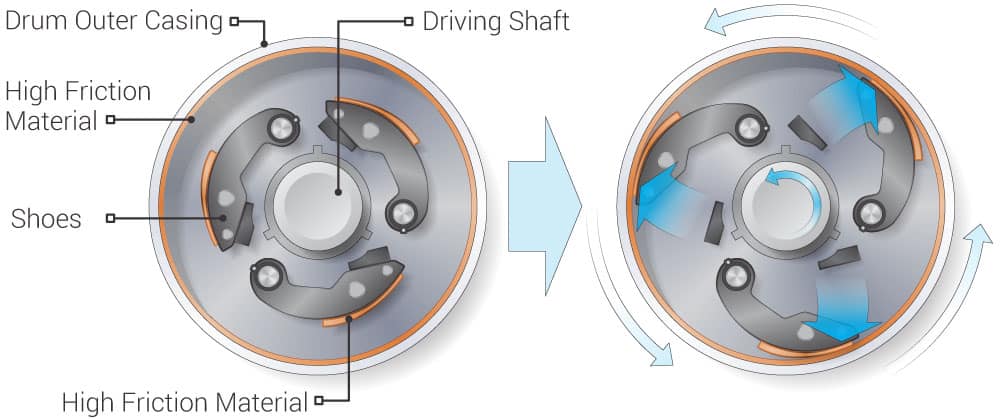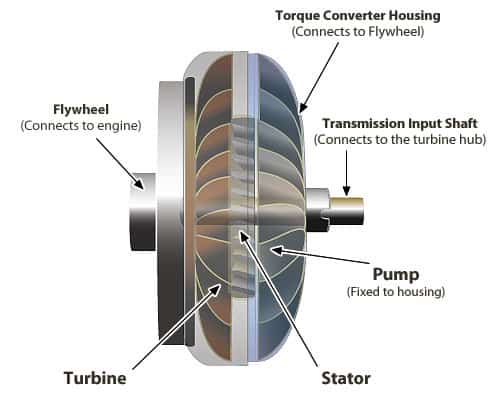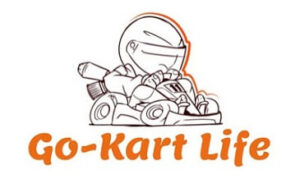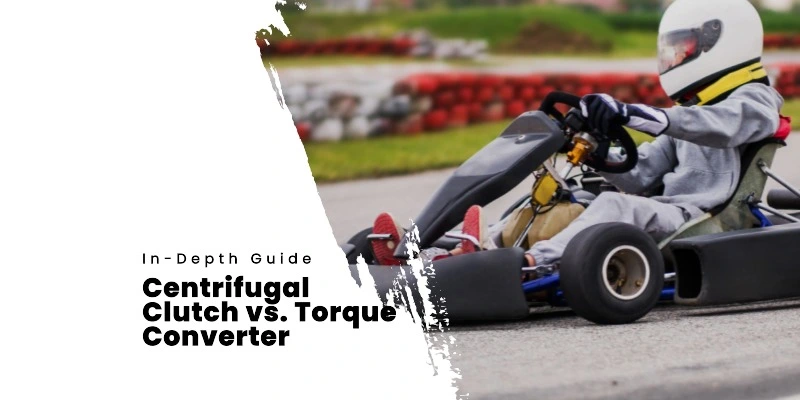Engine and transmission systems play a vital role in transferring power between components. The go-kart centrifugal clutch vs. torque converter debate is crucial in understanding the differences between these essential mechanisms. Knowing these differences lets you know which suits your needs best, whether for a go-kart or any other application.
This guide will look at the intricacies of centrifugal clutches and torque converters. We’ll discuss their structures, functions, and ideal uses. By the end of this guide, you’ll better understand these mechanisms and their roles in various applications, thus enabling you to make an informed decision on which system to use.
| Key Takeaways |
|---|
| Centrifugal clutches are ideal for high-speed applications like go-karts and lawnmowers, while torque converters work best with automatic transmissions and heavy machinery. |
| Centrifugal clutches operate based on centrifugal force, while torque converters utilize fluid coupling for torque transfer. |
| Centrifugal clutches are self-acting and low-maintenance, while torque converters require additional components and complex systems. |
| Torque converters have lower fuel efficiency due to power loss in fluid coupling, which is not an issue for centrifugal clutches. |
| Both centrifugal clutches and torque converters have unique advantages, making them suitable for different applications and specific performance requirements. |
What is a Centrifugal Clutch?
A centrifugal clutch connects the engine shaft to the transmission. It mainly relies on centrifugal force to work. You can find this mechanism between the engine’s flywheel and the transmission. It’s best for high-speed applications like chainsaws, go-karts, lawnmowers, and minibikes.
The clutch engages and disengages based on the centrifugal force created by the motor or engine. Centrifugal force causes the sliding shoes to move outward when the engine turns. As a result, they connect to the inside of the drum, and power is sent from the engine shaft to the transmission.
Related Article: Go-Kart Clutch – The Ultimate Guide
- 10 Tooth, 3/4", Bore #40/41/420 Chain.
- Super Grade High Impact/Wear Resistant Steel, 50% Longer Lifetime.
- Perfect for: Go Kart, Mini bike, Fun Kart, Lawnmower, 6.5 HP Engines.
Parts of a Centrifugal Clutch
A centrifugal clutch is a simple, self-acting device that engages and releases the engine from the driven system based on rotational speed. It is commonly used in applications such as chainsaws, lawnmowers, and other small engines. The main components of a centrifugal clutch are:
Shoes
- Slide into the guideways and have friction lining on the end
- Engage with the drum when the engine reaches a certain speed
Spring
- Releases the clutch when the engine operates at a low speed
- Works in conjunction with the sliding shoes to control engagement
Guides/Spider
- Found on the engine or motor shaft, spaced equally apart
- House the sliding shoes and springs, ensuring even engagement
Friction Lining
- Located on the outside of the outer surface of the shoes
- It helps the shoes grip the inner part of the drum during the engagement.
Drum
- Serves as housing for all components, including springs, guides, and sliding shoes
- Connected to the driving shaft, belt, or chains for power transmission
These components work together to provide a simple and efficient power transfer method, making centrifugal clutches suitable for various applications. They can be used in axle sprockets and pulley systems, where the clutch plays a crucial role in performance.

Image: Engineeringclicks.com
How Does It Work?
First, the engine rotates, and the engine crankshaft begins to turn. The centrifugal clutch’s inner workings also begin to turn, but the drum stays put. No power is transmitted.
At lower rpms, the centrifugal force produced is not powerful enough to overtake the spring force. Therefore, the clutch stays disengaged.
As speed increases, the centrifugal force becomes more powerful than the spring force. As this force becomes more significant than the spring, the sliding shoes can move outward against the spring and engage with the drum’s inner surface.
The drum will rotate and transfer the engine’s rotating power to the driver pulley on the jackshaft. When the engine’s load increases, the speed decreases, and the clutch disengages.
We realize it can be a bit hard to put all this together. Please check out this video here to see it in action.
Applications Best Suited for Centrifugal Clutch
As we mentioned, high speeds are best for a centrifugal clutch. You will find it in machines that have to move at high speeds.
Some examples are chainsaws, racing go-karts, lawnmowers, and minibikes, to name a few. Boats also make use of this style of clutch. This is because it keeps the engine going even when it stalls and helps disengage loads during idling and starting processes.
It is advantageous because it is not very pricey, is automatic, does not require a control mechanism, and is relatively simple and easy to maintain than other types of clutches, such as variable gear ratio systems.
What is a Torque Converter?
If you are driving a vehicle with an automatic transmission, as many cars in the USA are, then you will require a torque converter so that your car can come to a complete stop.
Vehicles featuring an automatic transmission require a way to have the engine spin while the wheels and gears inside the transmission come to a halt.
Manual transmission vehicles make use of a clutch for this to happen. The engine is entirely disconnected from the transmission in this situation. Meanwhile, torque converters are used in automatic-transmission vehicles.
A torque converter is just one type of fluid coupling that lets the engine become independent of the transmission.
Should the engine be turning slow, such as during periods of idling in a parking space or drive-thru window, the amount of torque transmitted through the torque converter is minimal.
Therefore, holding the brake and keeping the car steady requires only a small amount of pressure.
Imagine a person steps on the gas pedal while the car is stopped. Now they wish to stop the car once more.
It becomes necessary to step harder on the brake to prevent the car from moving. Why is this?
When you apply pressure to the gas pedal, the engine gains speed. It transmits more fluid to the torque converter. This sends more torque to the wheels.
Parts of a Torque Converter

Image: transmissionrepaircostguide.com
A torque converter is a fluid coupling device used in vehicles with automatic transmissions and heavy machinery. It allows the engine to operate independently from the transmission, providing a smooth power transfer and adjustable torque. The main components of a torque converter are:
Pump
- Attached to the engine crankshaft
- Features fins that move at the same speed as the engine
- Functions as a centrifugal pump, generating fluid flow within the torque converter
Turbine
- Connected to the transmission’s input shaft or driver pulley
- It consists of curved blades that capture the fluid flow from the pump
- Moves in response to the fluid flow, transferring power from the engine to the transmission
Stator
- Mounted on a fixed shaft in the transmission, usually with a one-way clutch
- Aggressively designed blades change fluid direction before it reaches the pump again
- Enhances torque converter efficiency by redirecting fluid flow
Transmission Fluid
- Acts as the medium for power transfer between the pump and the turbine
- Circulates within the torque converter, driven by centrifugal force from the pump
These components work together to provide smooth power delivery and torque adaptability, making torque converters suitable for various applications, such as off-road vehicles, high-torque machinery, and racing go-karts. They are often used with other components like jackshafts, axle sprockets, and pulley systems to optimize power transmission and performance.
How Does It Work?
Like the centrifugal clutch, the torque converter also features housing. In this case, the housing is attached to the engine’s flywheel via a bolt.
Some fins are part of the pump of the torque converter. They are attached to the converter’s housing and thus turn at the same speed as the engine.
The pump inside of the torque converter operates with centrifugal force. It is a centrifugal pump. As the pump spins, fluid goes to the outside, similar to how a washing machine throws water and clothing into the machine’s tub.
As a result of this phenomenon, a vacuum is created, and more fluid is pulled to the center.
This fluid then makes its way to the turbine blades. This is connected to the transmission. The turbine makes the transmission spin, which results in your car moving.
The turbine blades feature a curve. The fluid enters from the outside of the turbine. Thanks to the curved blades, it changes direction before leaving the center of the turbine, and the change in direction results in the turbine spinning.
The fluid exits at the center of the turbine. It is moving in a different direction than when it first entered the turbine from the outside.
This is where the stator comes in.
The stator is at the dead center of the torque converter. The purpose of the stator is to redirect fluid returning from the turbine. It sends it away before it touches the pump again.
This results in a more efficient torque converter.
Check out this helpful video here to learn more.
More About the Stator
The stator’s blade design is aggressive and is designed to do a specific job. It is designed to reverse the transmission fluid direction.
Inside the stator, a one-way clutch connects the stator to a fixed shaft. This fixed shaft is in the transmission. Thanks to this arrangement, the stator cannot spin with the fluid.
Instead, it spins only in the opposite direction. This forced the fluid to change direction when it came into contact with the blades of the stator.
Applications Best Suited for Torque Converters
As you have already guessed, automatic transmissions are best for torque converters. You see such transmissions on conveyor belts, drill rigs, and forklifts. Even heavy construction equipment uses this mechanism, as well as locomotives. Marine propulsion is another popular application for torque converters.
The torque converter has lesser fuel efficiency than a vehicle equipped with a manual transmission. The transmission does not move at the same speed as the engine. As a result, you waste power.
In off-road vehicles and high torque applications like racing go-karts, you may find fixed gear ratios, axle sprockets, or variable gear ratio systems as alternatives. The type of clutch and gear ratio chosen depends on the vehicle or machine’s specific needs and performance requirements.
Compare and contrast any manual transmission car with the same model featuring an automatic. You will see the difference in gas mileage.
Related Article: Do Go-Karts Have A Clutch?
Go-Kart Torque Converter vs Clutch
Comparing centrifugal clutches and torque converters, both essential in power transfer, reveals they operate distinctively and cater to different applications. The following brief comparison underscores their differences:
- Functionality: A centrifugal clutch relies on centrifugal force to engage and disengage the driving shaft. At the same time, a torque converter uses fluid coupling to transfer torque from the engine to the transmission.
- Applications: Centrifugal clutches are best suited for high-speed applications, such as go-karts, lawnmowers, and chainsaws. In contrast, torque converters are used primarily in vehicles with automatic transmissions and heavy machinery.
- Control: Centrifugal clutches are self-acting and do not require a separate control mechanism, making them simpler and easier to maintain. Torque converters, however, often involve more complex systems and require additional components for optimal operation.
- Efficiency: Torque converters generally have lower fuel efficiency than vehicles equipped with manual transmissions due to power loss in the fluid coupling. This is not a concern for centrifugal clutches, which directly engage and disengage without fluid use.
| Feature | Centrifugal Clutch | Torque Converter |
|---|---|---|
| Functionality | Centrifugal force | Fluid coupling |
| Ideal Applications | High-speed machines & small vehicles | Automatic transmissions & heavy machinery |
| Control | Self-acting, no separate control | Requires additional components |
| Efficiency | Direct engagement, no power loss | Power loss in fluid coupling |
Pros and Cons
Centrifugal clutches are simple, self-acting, and do not require a separate control mechanism. They are also more efficient as they directly engage and disengage without fluid use. However, they may not be suitable for applications that require smooth power transfer or variable torque.
On the other hand, torque converters provide smoother power transfer and variable torque, making them suitable for automatic transmissions and heavy machinery. However, they have lower fuel efficiency and require additional components for optimal operation.
Related Article: Why is Go-Kart Clutch Smoking and How to Prevent or Fix The Issue
Conclusion
Centrifugal clutches and torque converters serve different purposes and excel in their applications. Centrifugal clutches are ideal for high-speed applications and offer simplicity and ease of maintenance.
Simultaneously, torque converters are essential for vehicles with automatic transmissions and find extensive use in heavy machinery. Understanding the differences between these two mechanisms enables you to make informed decisions when choosing the optimal solution for your particular requirements.
Frequently Asked Questions
Go-karts typically need a clutch to transfer power between the engine and wheels. Both centrifugal clutches and torque converters are common choices for go-karts.
A torque converter is the better choice for a go-kart that requires smooth power transfer and strong acceleration. However, a centrifugal clutch may be more suitable if a racing go-kart operates at high speeds and requires direct power transfer.
A faulty or damaged torque converter can cause issues with the transmission, such as slipping or complete failure. It’s essential to maintain the torque converter and address any problems promptly.
While a torque converter doesn’t directly make a go-kart faster, it provides smoother power transfer and improved acceleration. However, the top speed of a go-kart depends on factors like engine power, weight, and gearing.
Centrifugal clutches usually don’t require lubrication because they work without direct contact between moving parts. Adding lubrication might cause slippage, reducing the clutch’s effectiveness. However, maintaining other clutch systems parts, like the chain or belt, is essential.

Goran, an experienced go-kart racer, fuels GoKartLife.com with his passion and expertise. He offers valuable insights and tips for fellow enthusiasts, fostering the growth of the go-kart community. Join Goran at GoKartLife.com and immerse yourself in this exhilarating sport.




